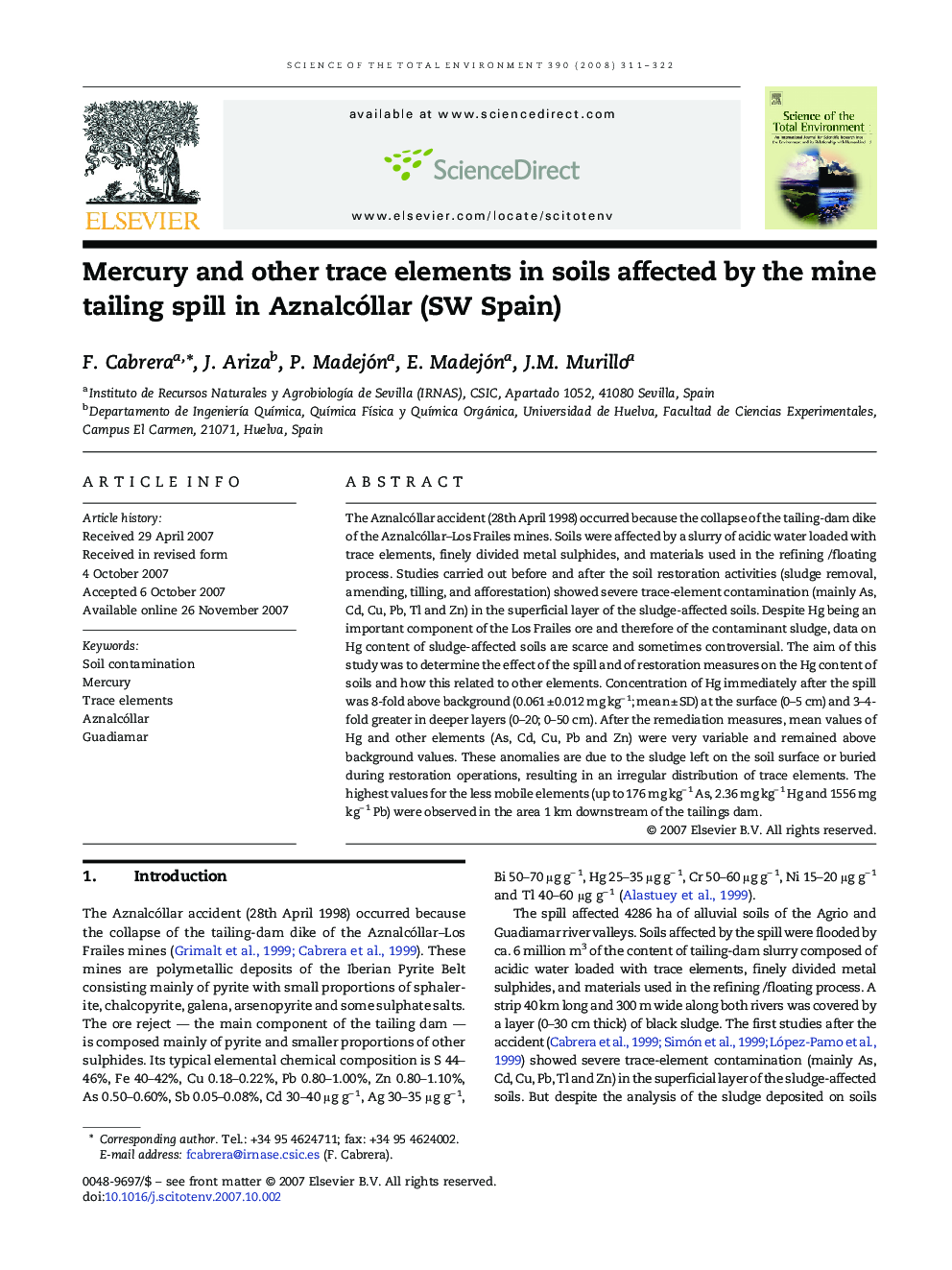| Article ID | Journal | Published Year | Pages | File Type |
|---|---|---|---|---|
| 4432374 | Science of The Total Environment | 2008 | 12 Pages |
The Aznalcóllar accident (28th April 1998) occurred because the collapse of the tailing-dam dike of the Aznalcóllar–Los Frailes mines. Soils were affected by a slurry of acidic water loaded with trace elements, finely divided metal sulphides, and materials used in the refining /floating process. Studies carried out before and after the soil restoration activities (sludge removal, amending, tilling, and afforestation) showed severe trace-element contamination (mainly As, Cd, Cu, Pb, Tl and Zn) in the superficial layer of the sludge-affected soils. Despite Hg being an important component of the Los Frailes ore and therefore of the contaminant sludge, data on Hg content of sludge-affected soils are scarce and sometimes controversial. The aim of this study was to determine the effect of the spill and of restoration measures on the Hg content of soils and how this related to other elements. Concentration of Hg immediately after the spill was 8-fold above background (0.061 ± 0.012 mg kg− 1; mean ± SD) at the surface (0–5 cm) and 3–4-fold greater in deeper layers (0–20; 0–50 cm). After the remediation measures, mean values of Hg and other elements (As, Cd, Cu, Pb and Zn) were very variable and remained above background values. These anomalies are due to the sludge left on the soil surface or buried during restoration operations, resulting in an irregular distribution of trace elements. The highest values for the less mobile elements (up to 176 mg kg− 1 As, 2.36 mg kg− 1 Hg and 1556 mg kg− 1 Pb) were observed in the area 1 km downstream of the tailings dam.
